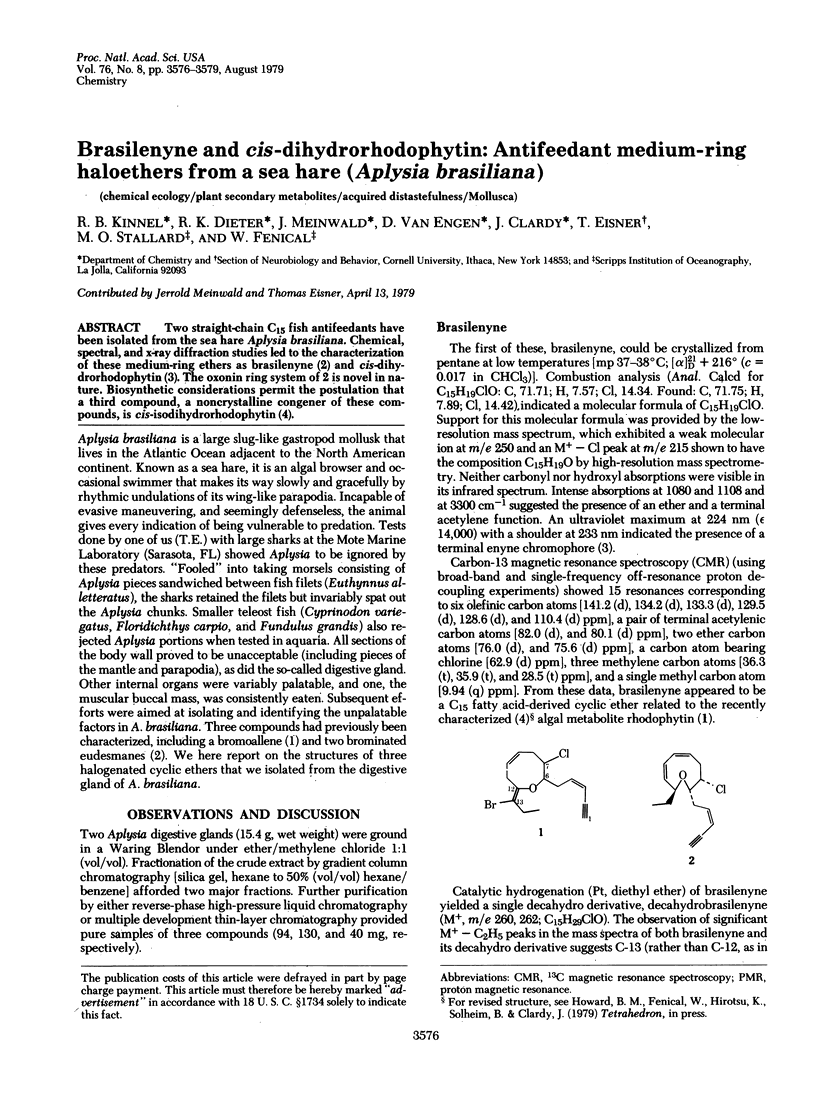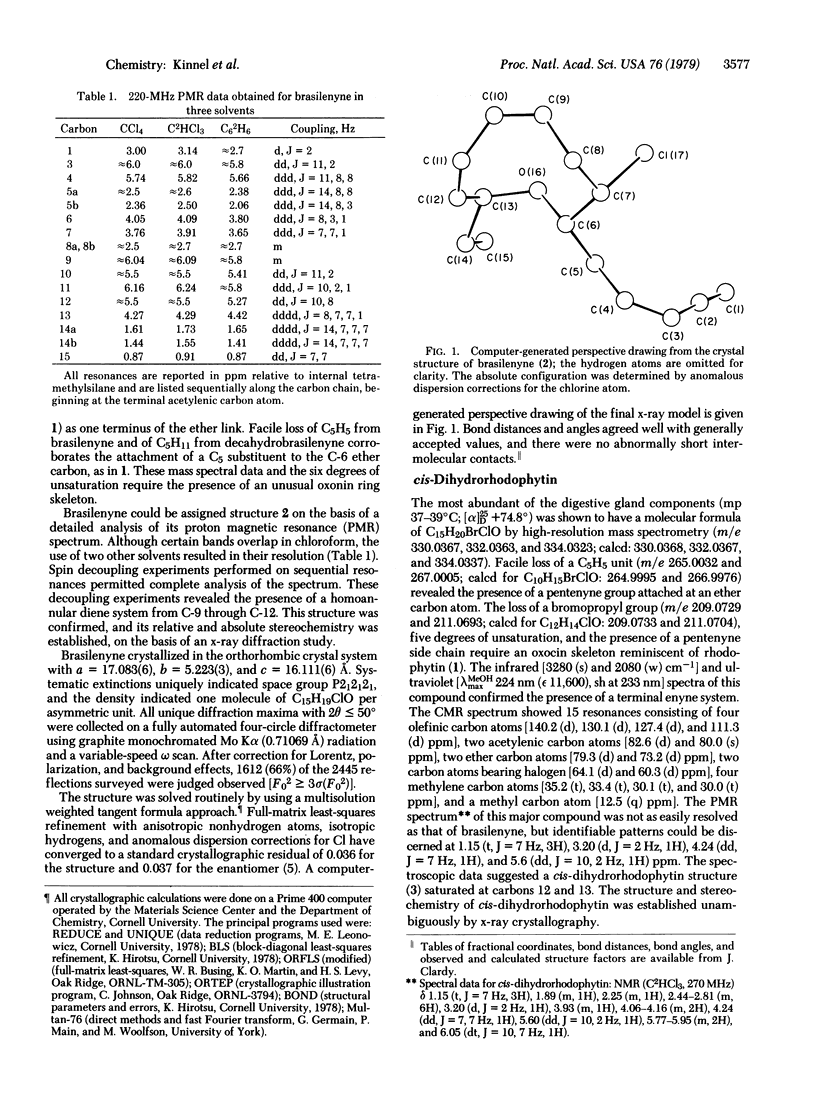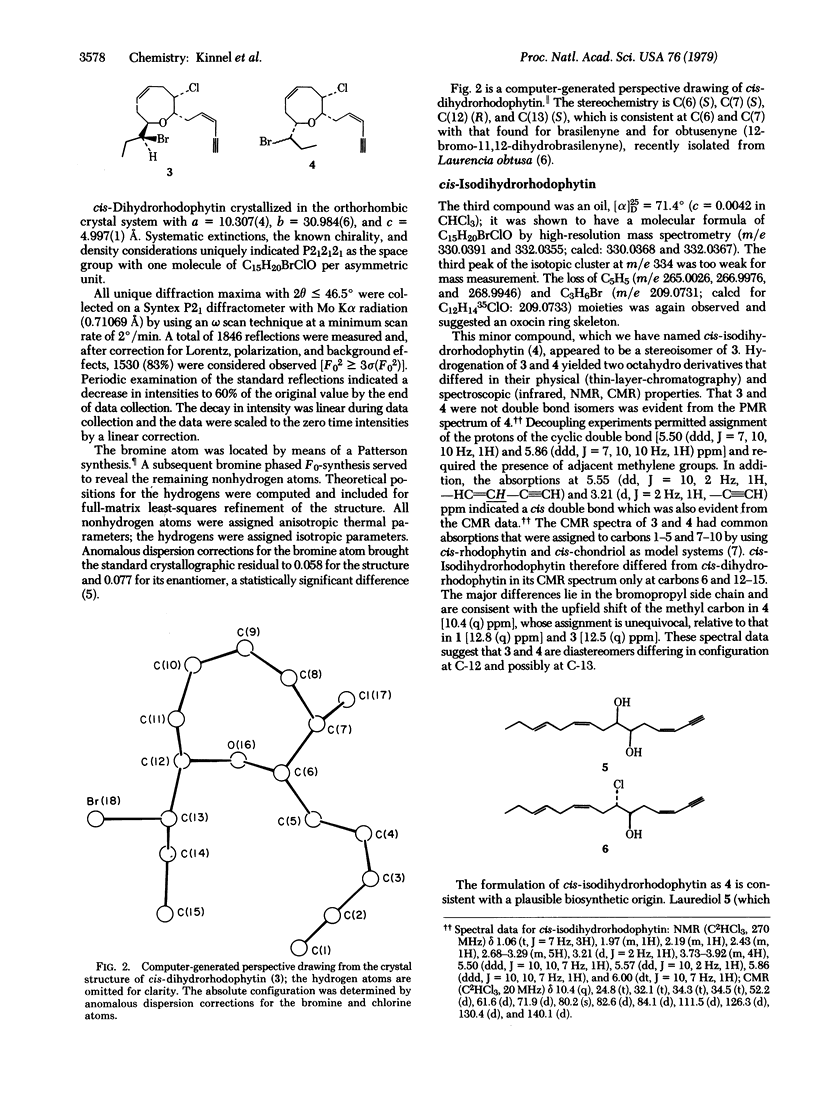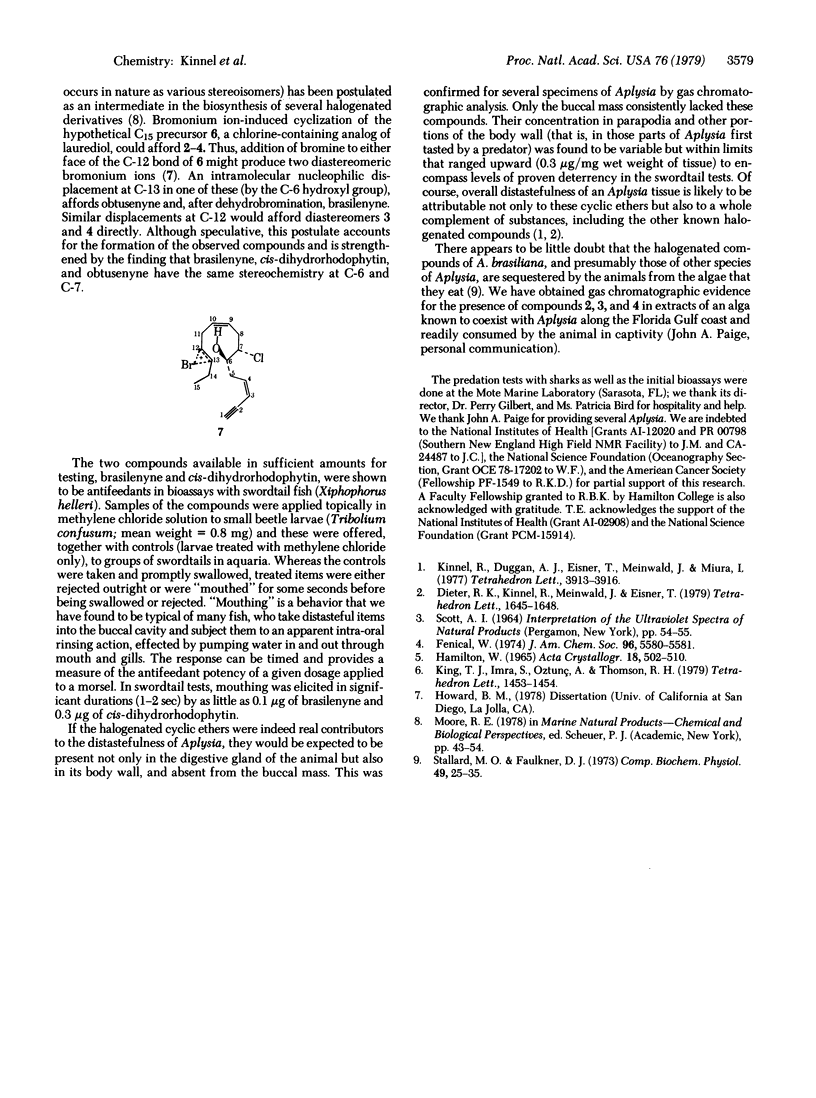Abstract
Two straight-chain C15 fish antifeedants have been isolated from the sea hare Aplysia brasiliana. Chemical, spectral, and x-ray diffraction studies led to the characterization of these medium-ring ethers as brasilenyne (2) and cis-dihydrorhodophytin (3). The oxonin ring system of 2 is novel in nature. Biosynthetic considerations permit the postulation that a third compound, a noncrystalline congener of these compounds, is cis-isodihydrohodophytin (4).
Keywords: chemical ecology, plant secondary metabolites, acquired distatefulness, Mollusca
Full text
PDF



Selected References
These references are in PubMed. This may not be the complete list of references from this article.
- Stallard M. O., Faulkner D. J. Chemical constituents of the digestive gland of the sea hare Aplysia californica. I. Importance of diet. Comp Biochem Physiol B. 1974 Sep 15;49(1B):25–35. doi: 10.1016/0305-0491(74)90218-1. [DOI] [PubMed] [Google Scholar]


